Description
Hoya polyneura “Fishtail Hoya”
Hoya polyneura, commonly known as the “Fishtail Hoya,” is a charming, low-maintenance plant with distinctive, elongated, and glossy leaves that resemble the shape of a fish’s tail. The plant’s unique foliage is a deep green with striking veins, and it blooms small, star-shaped flowers with a delightful fragrance. Native to Southeast Asia, this beautiful vining plant is perfect for hanging baskets, trellises, or as a trailing accent in larger plant displays, making it a wonderful addition to any indoor garden or home collection.
- Full Botanical Name: Hoya polyneura “Fishtail Hoya”
- Common Names: Fishtail Hoya
- Country and/or Region of Origin: Native to Southeast Asia
- Growing Conditions in Native Habitat: Grows as an epiphyte in tropical rainforests, thriving in shaded areas with high humidity and well-draining soil
- Care Guide:
- Light: Prefers bright, indirect light. While it can tolerate some lower light conditions, insufficient light will cause slower growth, and the plant may not flower as abundantly. Avoid direct sunlight, as it can scorch the leaves.
- Ideal Room: Ideal for living rooms, kitchens, or bathrooms with adequate indirect light and humidity. Its trailing habit also makes it perfect for hanging baskets or as part of a vertical garden.
- Feeding: Fertilize every 4-6 weeks during the growing season (spring to summer) with a diluted, balanced liquid fertilizer to support healthy growth and flower production. Reduce feeding in the fall and winter months when the plant is not actively growing.
- Humidity: Prefers high humidity. Regular misting, placing the plant on a humidity tray, or using a humidifier will help it thrive, particularly in dry indoor environments.
- Ideal Temperature: Best kept between 65°F and 80°F (18°C to 27°C). Protect from cold drafts and temperatures below 50°F (10°C), as it is sensitive to cold weather.
- Watering: Water when the top inch of soil feels dry. Be careful not to overwater, as Hoya polyneura is prone to root rot in soggy conditions. Ensure the plant is in well-draining soil and allow the soil to dry slightly between waterings.
- Pet/Child Safe: Non-toxic to pets and children, making it a safe option for homes with animals or young children.
- Soil Type: Use a well-draining potting mix, such as one formulated for houseplants or aroids. A mix with added perlite or orchid bark helps improve drainage and aeration for healthy root development.
- Propagation: Propagate by stem cuttings. Cut a healthy stem with at least one leaf and a node, and root it in water or well-draining soil. Once roots have formed, transplant the cutting into its own pot.
- Eventual Height and Spread: Typically grows up to 3-5 feet (90-150 cm) tall and wide, making it suitable for hanging baskets, pots, or as a trailing plant in a large container.
- Growth Rate: Moderate-growing. It will steadily grow during the growing season, producing new leaves and flowers, although its growth rate can slow in lower light conditions.
- Pests and Treatment: Generally resistant to pests but may occasionally attract mealybugs, aphids, or spider mites. Treat infestations with insecticidal soap or neem oil to prevent damage and keep the plant healthy.
- Repotting: Repot every 1-2 years or when the plant becomes root-bound. Choose a pot that is slightly larger than the current one to allow for healthy root growth, and ensure it has drainage holes to prevent water retention.
- Pruning: Prune leggy or spent growth to encourage new growth and maintain a full, bushy appearance. Regular pruning also helps the plant remain compact and tidy.
- Air Purification: Like many Hoyas, Hoya polyneura helps purify the air by removing common toxins such as formaldehyde and benzene, improving indoor air quality.
- Folklore: Hoyas are believed to bring good fortune and positive energy into the home. The “Fishtail Hoya” is particularly valued for its beauty and unique leaf structure, and it is often seen as a symbol of love and friendship.



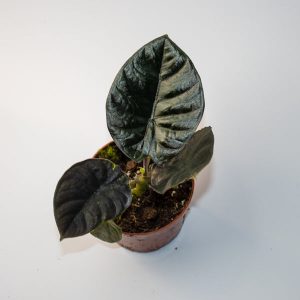
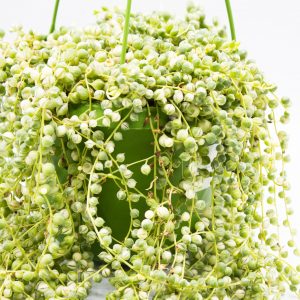
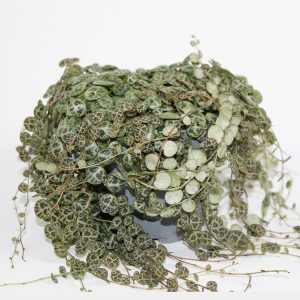
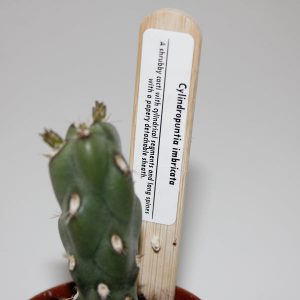

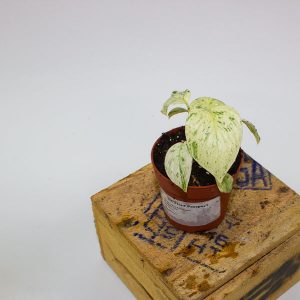

Reviews
There are no reviews yet.